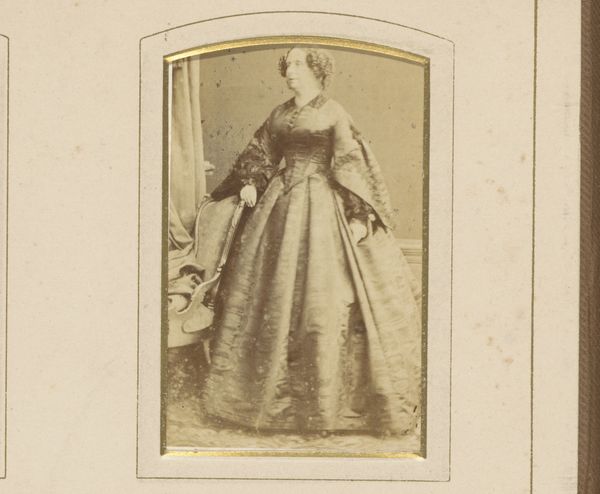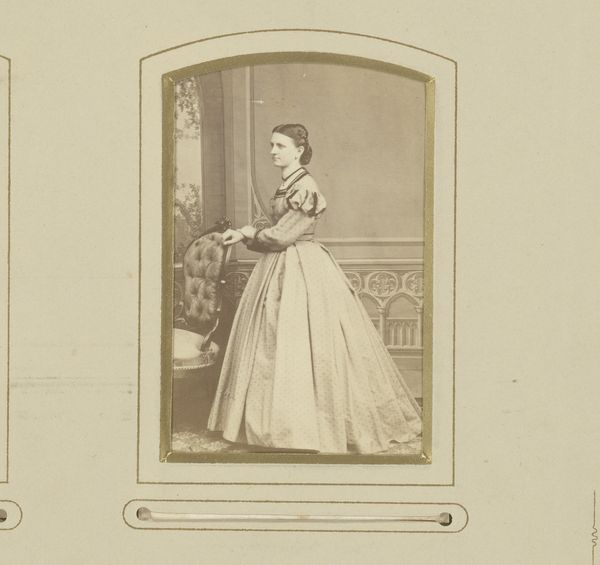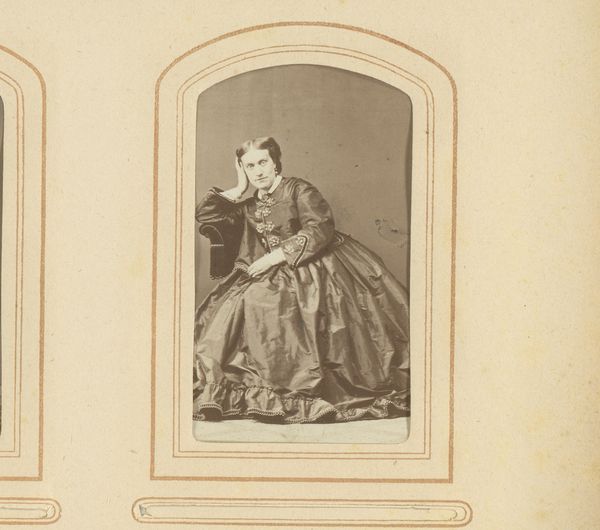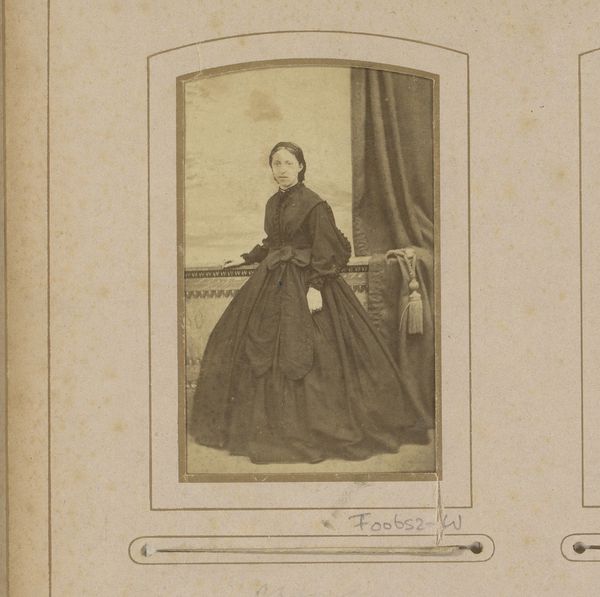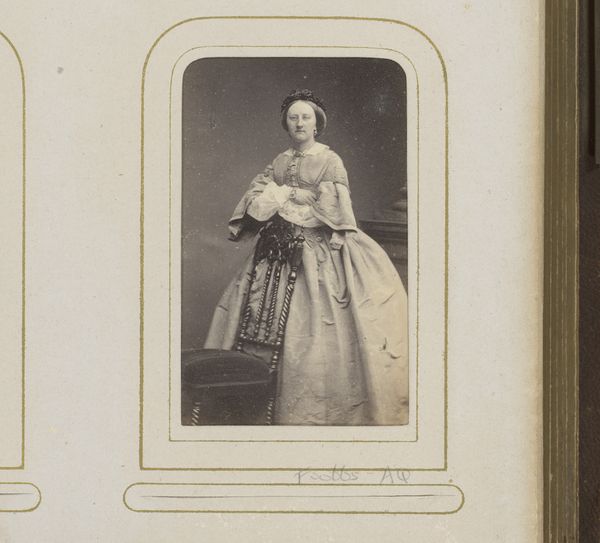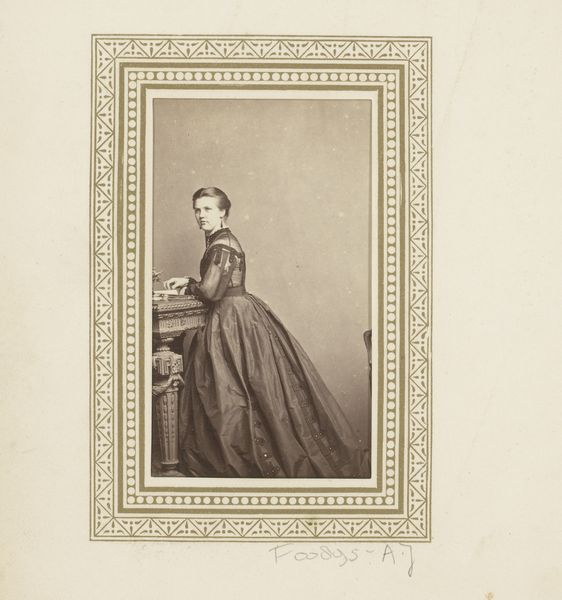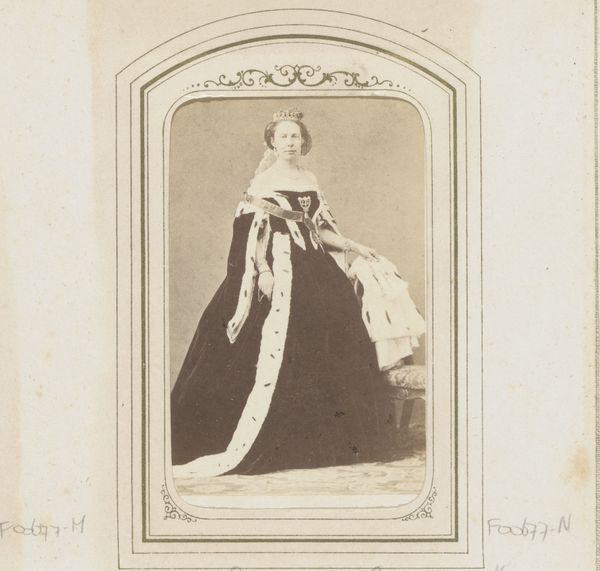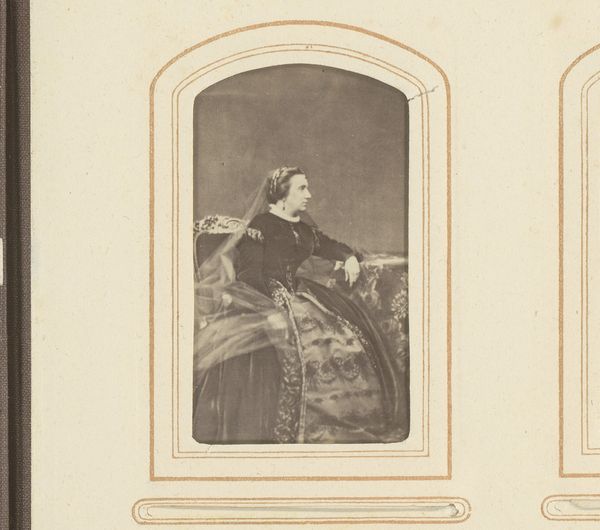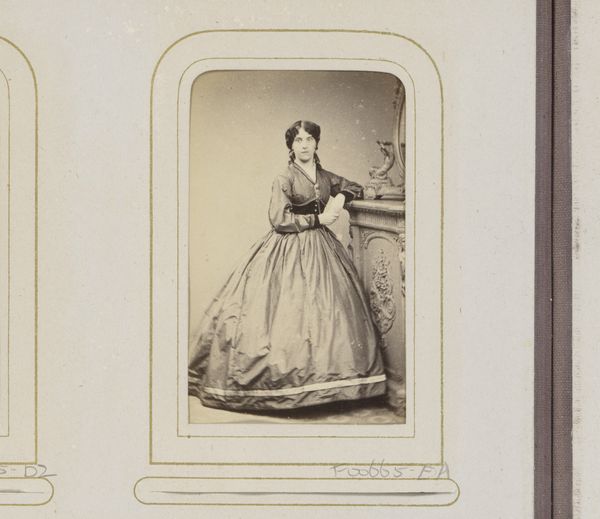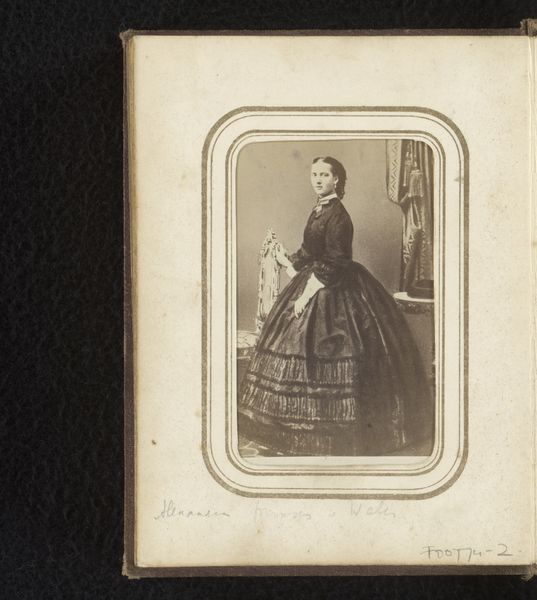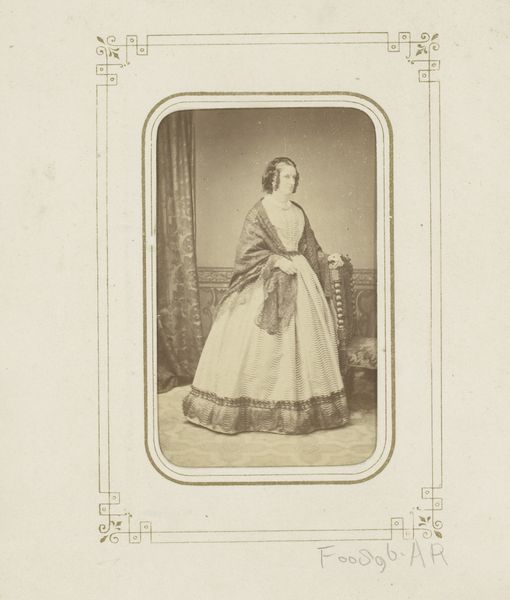
photography
#
portrait
#
photography
#
realism
Dimensions: height 89 mm, width 52 mm
Copyright: Rijks Museum: Open Domain
Editor: This is Ludwig Angerer's "Portrait of a Standing Woman by a Chair," taken sometime between 1865 and 1875. It’s a photograph, and what strikes me is how posed and formal it feels. It makes me wonder, what does this image tell us about how people wanted to be seen during this period? Curator: That’s a perceptive observation. In the mid-19th century, photography was becoming more accessible but still held a certain weight. Think about the rise of the middle class and their desire to emulate aristocratic portraiture. It’s not just about capturing a likeness, but about projecting a specific social identity. Look at the composition. What elements stand out to you beyond the woman herself? Editor: The chair, the table with the books… they definitely suggest a certain level of education and refinement. But does the rise of photography challenge or reinforce traditional social hierarchies? Curator: A fascinating question. It’s a double-edged sword, isn’t it? On one hand, photography allowed more people to participate in image-making. On the other, the conventions of portraiture – the poses, the props, the framing – were often borrowed from painting, thus reinforcing existing notions of status and taste. The photograph becomes an object to signify social position. We might consider what values it projects: what’s being conveyed by what's included, and, perhaps even more subtly, by what's excluded. Editor: So, while photography democratized portraiture to some degree, it also became a tool for social climbing and the performance of identity. It’s really interesting to consider the power dynamics embedded within what seems like a simple portrait. Thanks! Curator: Precisely. Thinking about art in its social and political context can reveal layers of meaning that are not immediately apparent. It highlights photography’s role not just as a medium for documentation, but also for constructing and perpetuating social narratives.
Comments
No comments
Be the first to comment and join the conversation on the ultimate creative platform.
